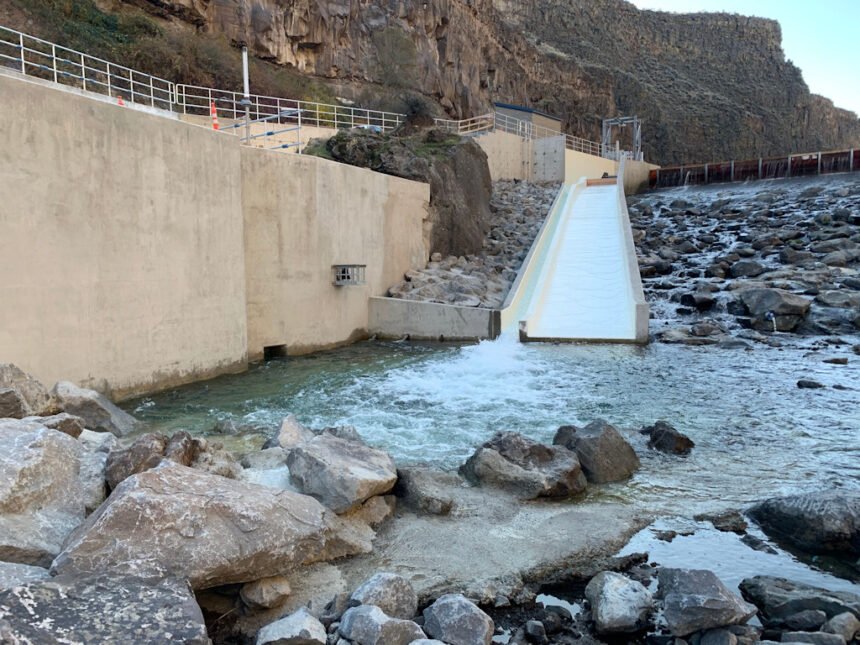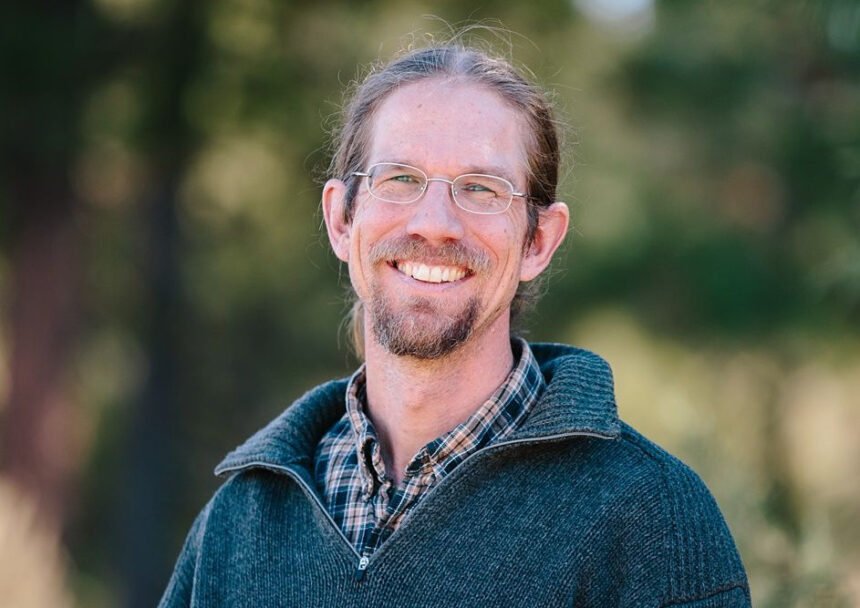State Land Board honors Opal Springs fish passage, ONDA’s Jefferson Jacobs


Project brought steelhead back to Crooked River; riparian coordinator honored for work with volunteers
MADRAS, Ore. (KTVZ) -- The Opal Springs Volitional Fish Passage project was honored Tuesday with a State Land Board Award, recognizing a longtime collaborative effort to eliminate a major fish migration barrier in the Crooked River watershed.
“Native steelhead and salmon now have easy, safe entry to Crooked River habitat,” says Secretary of State Bev Clarno, who presented the award in a virtual ceremony. “This project marks the completion of one of Oregon’s highest-priority fish passage projects.”
The project, which raised the Opal Springs dam pool height and installed a fish ladder, opens 125 miles of Crooked River habitat for native steelhead and salmon. Project partners worked together for decades to support, fundraise, and advocate for completion of the project.
Their efforts paid off. In November 2019 – just hours after completion of the fish ladder – a steelhead entered the Crooked River without human help for the first time in more than 50 years. In the months since, 28 steelhead have gained safe passage.
“We knew what needed to happen to help these fish,” says Chris Gannon, director of the Crooked River Watershed Council. “Collaborating, staying focused and looking for the right opportunities at the right time, and coming together to raise a project, is the Oregon way. This project is an achievement for all of Oregon.”
The Deschutes Valley Water District’s collaborators also included project team Kleinschmidt Group, Otak, JACOBS and RSCI Group, and partners the Oregon Department of Fish and Wildlife, the Oregon Watershed Enhancement Board, the Oregon Water Resources Department, the U.S. Bureau of Land Management, the National Oceanic and Atmospheric Administration, the U.S. Bureau of Indian Affairs, the Confederated Tribes of Warm Springs, Trout Unlimited, Portland General Electric, Energy Trust of Oregon and Deschutes Partnership.
Finlay Anderson, who managed the project for Kleinschmidt, noted that “this effort benefited from a strong culture of collaboration and problem solving in the Deschutes Basin by stakeholders who have been working to improve habitat and support the reintroduction of anadromous species.”
“As the project owner we have experienced firsthand the benefits of assembling a strong project management team to organize and prioritize the various stakeholder interests and support the interconnected organizational relationships over the extended duration of the project,” says Joel Gehrett, General Manager, Deschutes Valley Water District.
As a result of the efforts to provide fish passage, the Opal Springs Hydroelectric Project was able to obtain Low Impact Hydropower Institute certification, which recognizes reduction of environmental impacts.
“So much can be accomplished when partners join to achieve a project, and the Opal Springs fish passage is a stellar example,” says Oregon Department of State Lands Director Vicki L. Walker.
The Land Board also presented an award to Jefferson Jacobs, riparian restoration coordinator with the Bend-based Oregon Natural Desert Association, saying his commitment to engaging volunteers in restoration projects has enhanced thousands of lives along with thousands of acres.
“The work Jefferson does to organize, motivate, and guide volunteers is some of the hardest and most important work a restoration professional can do,” says Gov. Kate Brown, who presented the award in a virtual ceremony. “He’s not only enhancing state lands and waterways, he’s encouraging passionate stewardship.”
Jacobs has led riparian restoration projects in Oregon for more than a decade. Rethinking the role of volunteers, he says, has big benefits.
“The idea of using volunteers for meaningful restoration work is totally far out,” says Jacobs. “People think, well, volunteers can pull cheat grass or pick up cigarette butts. Beginning projects by looking at volunteers as a ready resource led us to realize how much significant work can be done by hand.”
The effectiveness of that approach is showcased in a recent habitat enhancement project at Hay Creek, in Cottonwood Canyon State Park in Gilliam County. Jacobs coordinated numerous multi-day work outings with 2,613 volunteer hours accomplished by a total of 119 individual volunteers. The work creates an opportunity to do something of immediate consequence – and also to make change over time, Jacobs says.
“In the evenings, we’d be sitting around a campfire talking about the ecology of an area and how it’s changing, which helps volunteers really see their contributions. Projects need them, and we are designing those projects to maximize the benefits they bring.”
Jefferson’s particular talent is inspiration, says Oregon Natural Desert Association Executive Director Ryan Houston.
“Whatever a project needs – whether it’s more hands, more resources, or community support – his spark lights the way for others to get involved,” Houston says.
The Land Board Awards honor exceptional partners for their contributions to protecting and enhancing Oregon’s treasured natural resources. Inspired by Jacobs, the Oregon Department of State Lands this year added a new category of partnership award.
“Jefferson today received the first Catalyst Award, which will henceforth recognize an individual partner whose efforts advance significant change,” says DSL Director Vicki L. Walker. “He is an amazing example of what a partner can do to increase stewardship of state lands and waterways.”
The projects and partners honored by the Land Board consistently demonstrate how much can be accomplished when Oregonians work together to help our lands and waters thrive.
Learn more about all 2020 Land Board Award winners on the awards website or view the awards ceremony on the DSL YouTube Channel.
About the State Land Board and the Department of State Lands: The State Land Board consists of Governor Kate Brown, Secretary of State Bev Clarno and State Treasurer Tobias Read. Established by the Oregon Constitution in 1859, the Land Board oversees the state’s Common School Fund. The Department of State Lands is the Land Board’s administrative agency, managing the lands and resources that help fund Oregon’s public schools and protecting the state’s waterways and wetlands for the many benefits they provide.